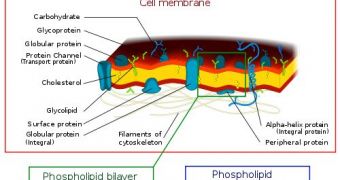A group of investigators in the United Kingdom published a new study recently, which details the simplest protocell model of early cell formation when life first developed on Earth. The chemical system the team developed will most likely be used in numerous upcoming studies.
Details of the work appear in a paper entitled “Peptide–nucleotide microdroplets as a step towards a membrane-free protocell model,” which was published in the August 8 advanced online issue of the top scientific journal Nature Chemistry.
Given that a cell is an extremely complex and highly evolved machine, it stands to reason that life as we know couldn't have developed without the emergence of cellular membranes. These are barriers that prevent the intracellular medium from interacting directly with the environment.
Modern forms of membranes also enable the cell to interact with its surroundings, by exchanging chemicals in a controlled manner. But this was not always the case, and experts have always asked themselves about how did the membrane appeared in the first place.
When looking at fossilized cells – dating back billions of years ago – one cannot help but notice the striking similarities in structure and function between these structures and their modern counterparts.
However, the fossil record does not also include the progenitors that led to the development of these cells. According to experts, a simpler, less complex version of these cells must have existed beforehand. The new model is meant to simulate how these protocells might have looked like.
University of Bristol School of Chemistry professor Stephen Mann and his colleagues created a chemical system that is capable of assembling itself into water-containing micro-droplets. The earliest protocells must have had a similar ability, the researchers hypothesize.
All the microdroplets contain adenosine triphosphate (ATP), which is the most important energy molecule cells operate on, as well as short polymer of the natural amino-acid lysine. There are 22 amino-acids known to date, and they represent the basic building blocks of proteins.
“Taken together, our results suggest that peptide–nucleotide microdroplets can be considered as a new type of protocell model that could be used to develop novel bioreactors, primitive artificial cells and plausible pathways to prebiotic organization before the emergence of lipid-based compartmentalization on the early Earth,” the study team says.
“We present an alternative membrane-free model, which demonstrates that low-molecular-weight mononucleotides and simple cationic peptides spontaneously accumulate in water into microdroplets that are stable to changes in temperature and salt concentration,” the group adds.
These peptides also “undergo pH-induced cycles of growth and decay, and promote α-helical peptide secondary structure,” the group concludes in the Nature Chemistry paper.

 14 DAY TRIAL //
14 DAY TRIAL //